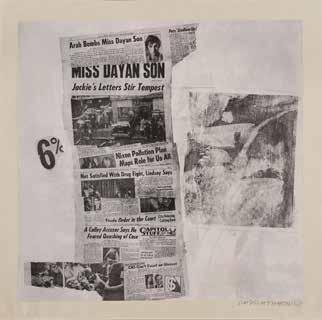
6 minute read
Collective Inspiration
PERFECT
COLLECTIVE INSPIRATION
THROUGH MAY 2, 2021 KELLY ELLMAN FASHION DESIGN GALLERY
On principle, renowned modernist and feminist writer Virginia Woolf used her pen as a sword, confronting topics such as sexism, war, and personal growth with cutting analysis. Woolf, however, was also known to comment on the value and function of clothing. A fashion risk-taker in her own right who gravitated toward the masculine and theatrical, she wore oversized coats, fur-trimmed collars, and widebrimmed hats, as evidenced in the few photographs of her that exist. “Vain trifles as they seem, clothes have, they say, more important offices than to merely keep us warm,” she once wrote. “They change our view of the world and the world’s view of us.”
One of the most significant social critics of her time, Woolf quite clearly understood the power of fashion to challenge, reframe, and re-envision the way we see each other and ourselves, a power often attributed to art. In this way, then, it makes perfect sense that fashion should be considered—and is—art, an assertion made by many, whether as indirectly as Woolf, or directly argued by the likes of fashion designer Carolina Herrera, modern artist Andy Warhol, and even English philosopher Francis Bacon. Still, the question “Is fashion art, and why?” lingers in the minds of contemporary audiences. For Helen Jean, the Jacquie Dorrance Curator of Fashion Design at Phoenix Art Museum, it is a question she is often asked.
Phoenix Art Museum has long recognized fashion design as an important form of artistic expression and is one of only seven major museums in the country with a fashion-design collection of significance. Founded in 1966, the Museum’s renowned collection is home to more than 8,000 garments and accessories for women, men, and children that span the 17th century to the present.
It is from these comprehensive holdings that Jean drew dresses, jackets, gloves, and more to curate the newest fashion exhibition at Phoenix Art Museum. Unlike past exhibitions inspired by a geographical theme or a single time period, Jean selected objects with a different purpose in mind: to answer the frequently asked question once and for all and to set the matter straight—that fashion is art, worthy of a place alongside renowned paintings, sculptures, and more from throughout art history.
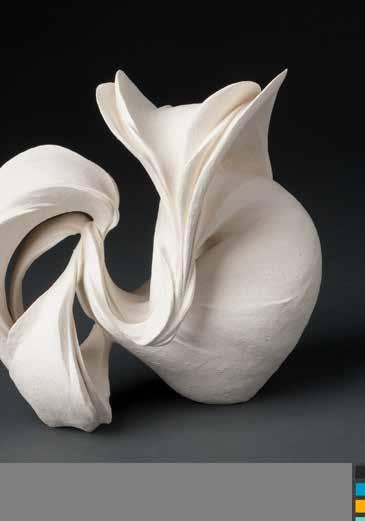
Collective Inspiration, on view through May 2, 2021, pairs approximately 10 fashion objects and ensembles with artworks from across the Museum’s Asian, American, Latin American, European, and contemporary collections. Each pairing demonstrates how formal principles of art and design may be applied to garments and accessories in the same ways they are applied to paintings, prints, and sculptures. To encourage contemplation on formal aspects of featured artworks, each pairing CONTINUED ON PAGE 18
includes interpretive text written by Jean, whose conversations with the Museum’s other curators, specializing in photography and Asian, American, and contemporary art, helped inform the pairings and exhibition copy. “Collective Inspiration is meant to set the stage for dialogue about what makes something art,” Jean said. “I really want our visitors to see how the conversations they’re having in the Asian or American art galleries can carry over as they explore our fashiondesign exhibitions.” One object grouping in the exhibition features a cream-colored suit by American designer Ralph Rucci and a ceramic sculpture of a similar hue by contemporary Japanese sculptor Fujikasa Satoko. Beyond their similar color palette, however, both works are characterized by organic, undulating lines and exacting technical precision. Fujikasa is known for her fluid sculptures that are handcrafted from pliable clay. Because of the thinness of her sculptures’ walls, some of which measure in at just three millimeters, the drying process for these works is often the trickiest stage of her process. Rucci, who draws inspiration from diverse genres such as Far Eastern asceticism, modern art, and the Flemish Renaissance, is known for a similarly unerring commitment to favored materials, in addition to his architectural process that yields stunning and chic yet highly wearable garments. “As soon as I saw that stoneware sculpture by Fujikasa Satoko, I knew it would relate to the surface-design work of Ralph Rucci,” Jean said when reflecting on why she brought these objects together. “Yes, both works exhibit similar illusions of movement, but it’s when we take a step back to look at the technical precision it took to create them, when we really start to analyze each through the lenses of planning, purpose, and process, that we start to think of these works as similar beyond our initial reactions after a fleeting glance.”
Collective Inspiration also features a dress by Rei Kawakubo for Comme des Garçons’ Spring/Summer 2018 line, placed in conversation with a still-life painting by 17th-century Flemish artist Jan van Dalen II. Kawakubo’s creation features a printed portrait of Holy Roman Emperor Rudolf II by Renaissance painter Giuseppe Arcimboldo, who has used fruits and vegetables as his patron’s facial features. The pairing of this work with van Dalen’s vanitas still life, whose subject is the death of human vanity, invites viewers to explore similarities of form and composition, in addition to the ways in which each work tackles themes of egotism and self-preservation.
These groupings, along with sections that pair an Op-Art silkscreen print by Victor Vasarely with a suit by Alexander McQueen and the fashion collection’s oldest objects—leather gloves with metallic lace from c. 1640—with a portrait from 18th century Mexico, set the stage for thoughtful discussions.
“I want debates in the gallery,” Jean said. “I want to inspire new conversations about fashion and its place in museums.” So when community members visit the Museum ready to explore Collective Inspiration this winter and spring, they should come armed with their opinions, yes, but they should also be prepared to consider something new and unexpected, something that changes their minds entirely about fashion as art.

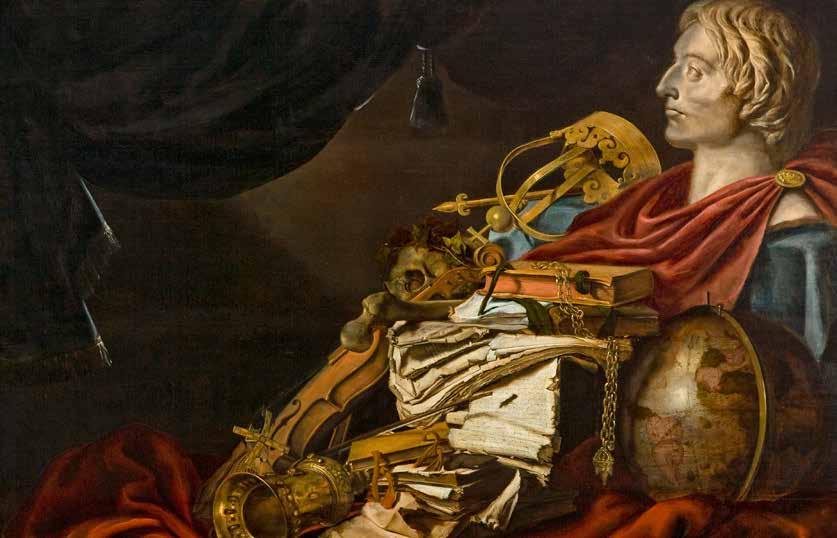
HELEN JEAN
JACQUIE DORRANCE CURATOR OF FASHION DESIGN
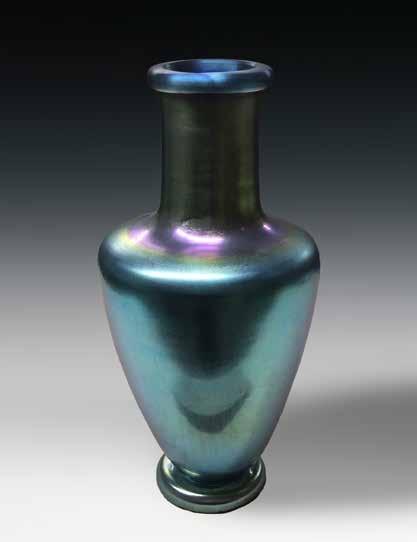
Collective Inspiration is organized by Phoenix Art Museum. It is made possible through the generosity of The Kelly Ellman Fashion Design Endowment Fund and Arizona Costume Institute, with additional support from the Museum’s Circles of Support and Museum Members.
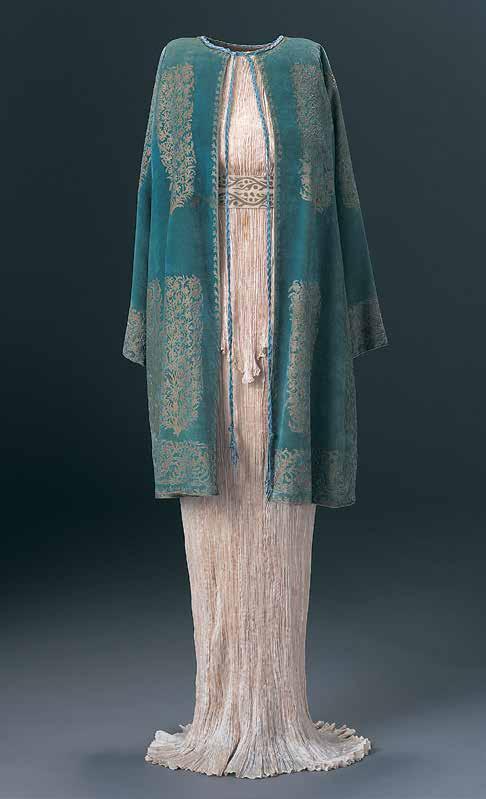
image credits: (page 16) Ralph Rucci, Jacket, spring 2009. Double-faced wool crepe and netting. Gift of Diane Halle. (page 17) Fujikasa Satoko, Movement of Nature, 2013. Stoneware. Gift of Carol and Jeffrey Horvitz. (page 18, left to right) Rei Kawakubo for Comme des Garçons, Dress and shoes, spring/summer 2018 look #13. Inkjet printed polyester velvet, leather. Museum purchase with funds provided by Arizona Costume Institute; Jan van Dalen, Still Life: Vanitas, c. 1665. Oil on oak panel. Museum purchase with funds provided by Friends of European Art. (above) Mariano Fortuny y Madrazo, Blue velvet coat with gold stenciled painted design, 1934. Silk velvet stenciled with metals. Gift of Mrs. Anne Robinson. (left) Tiffany and Company, Favril Vase, 1921. Glass. Gift of Edward Jacobson.








